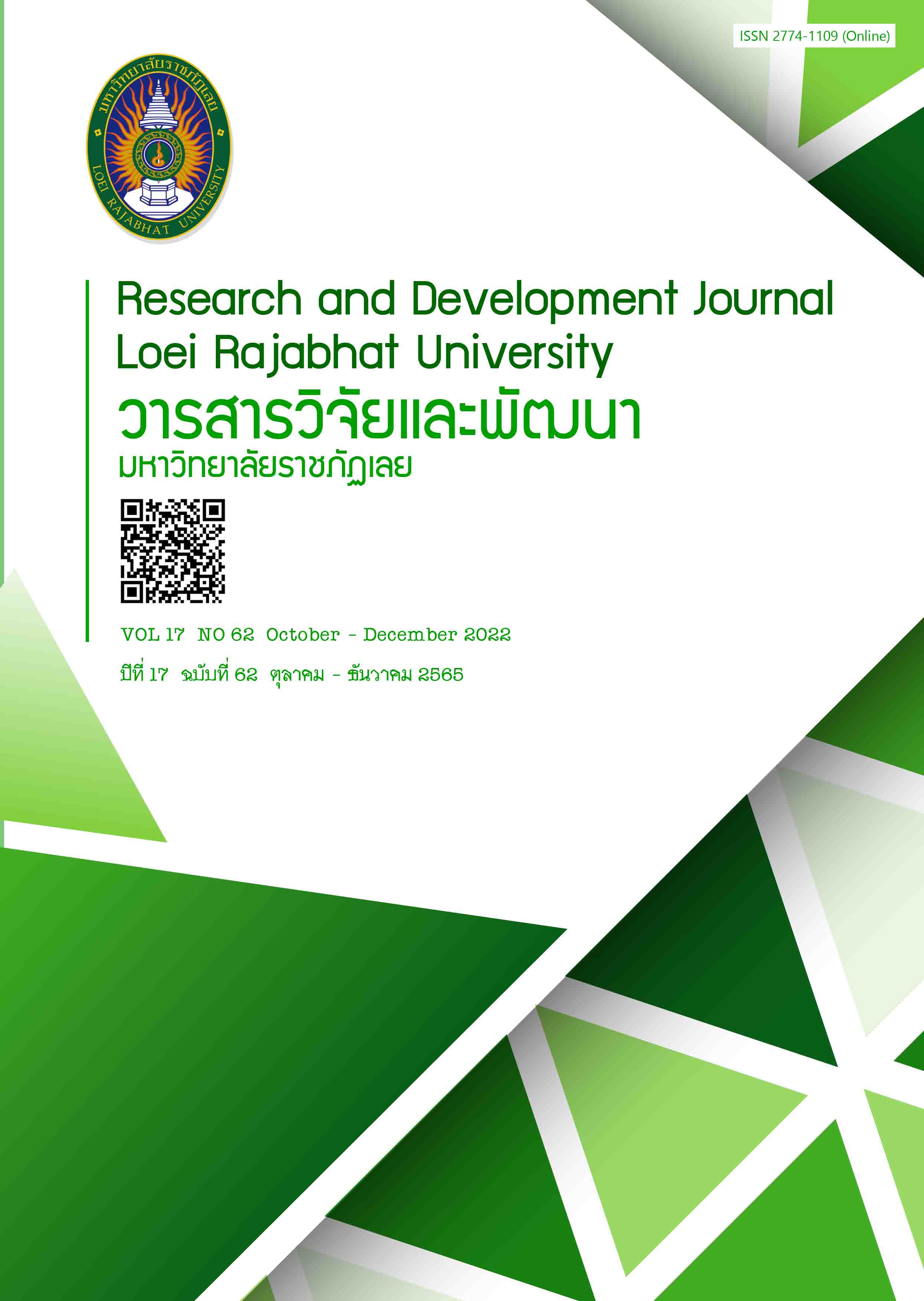Influence of Content Marketing, Value Co-Creation and Customer Engagement to Social Network Loyalty
Keywords:
content marketing, value co-creation, customer engagement, customer loyaltyAbstract
This study aimed to investigate the structural equation model of the influence of creative content marketing with the concept of creating values co-creation and customer brand engagement results in enhancing brand loyalty on social network. The study was a survey research and evaluated by quantitative methodology. A sample was selected from 400 social shoppers all over Thailand. Based on research instrument, it was concluded that The Index of Item-Objective Congruence (IOC) was 0.86 and the value of reliability was 0.93. Data were analyzed using descriptive statistic, such as percentage, arithmetic mean, standard deviation, inferential statistics, Confirmatory Factor Analysis (CFA) and Structural Equation Model (SEM) and evaluated by statistical software.
The results of these analyses showed that the general information of social shoppers is more female than male. Most of them are between 31-40 years old with a bachelor’s degree, working as employee and earning the highest average monthly income between 30,001-40,000 baht. The frequency of social media use among the groups are more than once per day and the most popular search engines are Shopee and Facebook respectively. The top selling product category are clothes/costumes/accessories and electrical appliances/electronic devices respectively. The highest frequency of purchase is once per month with less than 1,000 bath as the average amount of money spent on each purchase. The most popular payment methods are bank transfer/internet banking and credit card respectively. The samples have the strongest opinion on creating shared values, whereas the strong opinions are creative content marketing in terms of consumer loyalty and customer brand engagement respectively.
According to the analysis results of Structural Equation Model, it was founded that the results were consistent with the empirical data in a good level and revealed the value of Chi – Square 84.21/ P-Value .06 / CMIN/df 1.28 / CFI 0.99 / GFI 0.98 / AGFI 0.93 / RMSEA 0.03 / NFI 0.98 /IFI 0.99 / RMR 0.02 indicated that the model was consistent with the empirical data or OK Fit Confirm. The results of hypothesis also revealed that the creative content marketing has a direct influence on consumer engagement; the creating values co-creation has a direct influence on consumer engagement; the creative content marketing has a direct influence on consumer brand loyalty; the creating values co-creation has a direct influence on consumer brand loyalty; the consumer engagement has a direct influence on consumer brand loyalty; the creative content marketing has a direct influence on consumer engagement through consumer engagement; the creating values co-creation has a direct influence on consumer engagement through consumer engagement. Lastly, the results of path analysis revealed that the creative content marketing has the most positive influence on consumer brand loyalty following by creating values co-creation and consumer engagement respectively, whereas the creative content marketing has the most positive influence on consumer engagement and creating values co-creation respectively.
References
ธีรพันธ์ โล่ห์ทองคำ. (2550). รูปแบบกลยุทธ์การใช้เครื่องมือสื่อสารการตลาดเชิงบูรณาการ ในการบริหารคุณค่าตราสินค้า ตามระดับความสำคัญของผลิตภัณฑ์. มหาวิทยาลัยรามคำแหง, กรุงเทพฯ.
สำนักงานสถิติแห่งชาติ. (2020). สถิติเทคโนโลยีสารสนเทศและการสื่อสาร พ.ศ. 2563. สืบค้นจาก http://www.nso.go.th/sites/2014/Pages/home.aspx
อรรถชัย วรจรัสรังสี และ พนม คลีฉายา. (2556). ประเภทเนื้อหาการตลาดบนเฟสบุกแฟนเพจและความตั้งใจซื้อของผู้บริโภค. วารสารการประชาสัมพันธ์และการโฆษณา, 6(2) ,88-106.
Bollen, K.A. (1989). Structural equations with latent variables. New York: John Wiley & Sons.
Browne, M.W. and Cudeck, R. (1993). Alternative ways of assessing model fit, in Testing Structural Equation Models, ed. K.A. Bollen and Long. S., Newbury Park CA: Sage, 136-162.
Chiu, C-H., Cheng, H-L., Huang, H-Y, and Chen, C-F. (2013). Exploring individuals’ subjective well-being and loyalty towards social network sites from the perspective of network externalities: The Facebook use. International Journal of Information Management, 33(3), 539-552.
Diamantopoulos, A. and Siguaw, J.A. (2000). Introduction to LISREL: A guide for the uninitiated. London: SAGE Publications, Inc.
Durande-Moreau, A. and Usunier, J. (1999). Time Styles and the Waiting Experience: An Exploratory Study. Journal of Service Research, 2(2), 173-186.
Gamboa, A. M., and Gonçalves, H. M. (2014). Customer loyalty through social networks: Lessons from Zara on Facebook. Business Horizons, 57(6), 709–717.
Gronroos, C. (2008). Service Logic Revisited: Who Creates Value? And Who Co-Creates?. European Business Review, 20(4), 298-314.
Hair, J., Anderson, R., Tatham, R., and Black, W. (2010). Multivariate Data Analysis (7thed.), Upper Saddle River. New Jersey: Prentice Hall.
Hair, J., Black, W., Babin, B., Anderson, R. and Tatham, R. (2006). Multivariate Data Analysis (6th ed.). New Jersey: Pearson International Edition.
Harrison-Walker, L. J. (2001). The measurement of word-of-mouth communication and investigation of service quality and customer commitment as potential antecedents. Journal of Service Research, 4(1), 60-75.
Laroche, M., Habibi, M. R., Richard, M-O., and Sankaranarayanan, R. (2012). The effects of social media based brand communities on brand community markers, value creation practices, brand trust and brand loyalty. Computers in Human Behavior
Li, D. C. (2011). Online Social network acceptance: a social perspective. Internet Research, 21(5), 562-580.
Mueller, R. (1996). Confirmatory factor analysis. In Basic principles of structural equation modeling: An introduction to LISREL and EQS. New York: Springer-Verlag.
Olteanu, V. (2008). Modern Marketing Determinant Concept in the Reappraisal of Business and Organizational Professions and of Training Professionals in the New Economy. Management & Marketing, 6(1), 5-10.
Patterson P., Yu T., and de Ruyter K. (2006). Understanding Customer Engagement in Services, In: Proceedings of ANZMAC 2006, Conference, Brisbane
Prahalad, C. K., and Ramaswamy , V. (2004). The future of competition: Co-creating Unique value with customers. Boston: Harvard Business Review Press.
Sorbon D. (1996). LISREL 8: User’s Reference Guide. Scientific Software International.
Schiavone, F., Metallo, C., and Agrifoglio, R. (2014). Extending the dart model for social media. International Journal of Technology Management,
Schultz, D.E. and Block, M.P. (2009). Media Generations: Media Allocation in a Consumer-Controlled Marketplace. Ohio, OH: Prosper, 63-64.
Yamane, T. (1973). Statistics: An Introductory Analysis (3rd Ed). New York: Harper and Row Publications.
Downloads
Published
How to Cite
Issue
Section
License
Copyright (c) 2022 Research and Development Journal, Loei Rajabhat University

This work is licensed under a Creative Commons Attribution-NonCommercial-NoDerivatives 4.0 International License.
ข้อความที่ปรากฎในวารสารฉบับนี้เป็นความคิดเห็นของผู้เขียนแต่ละท่าน สถาบันวิจัยและพัฒนา มหาวิทยาลัยราชภัฏเลย และกองบรรณาธิการ ไม่จำเป็นต้องเห็นด้วยและไม่มีส่วนรับผิดชอบใดๆ
สถาบันวิจัยและพัฒนา มหาวิทยาลัยราชภัฏเลย ขอให้ผู้อ่านอ้างอิงในกรณีที่ท่านคัดลอกเนื้อหาบทความในวารสารฉบับนี้






